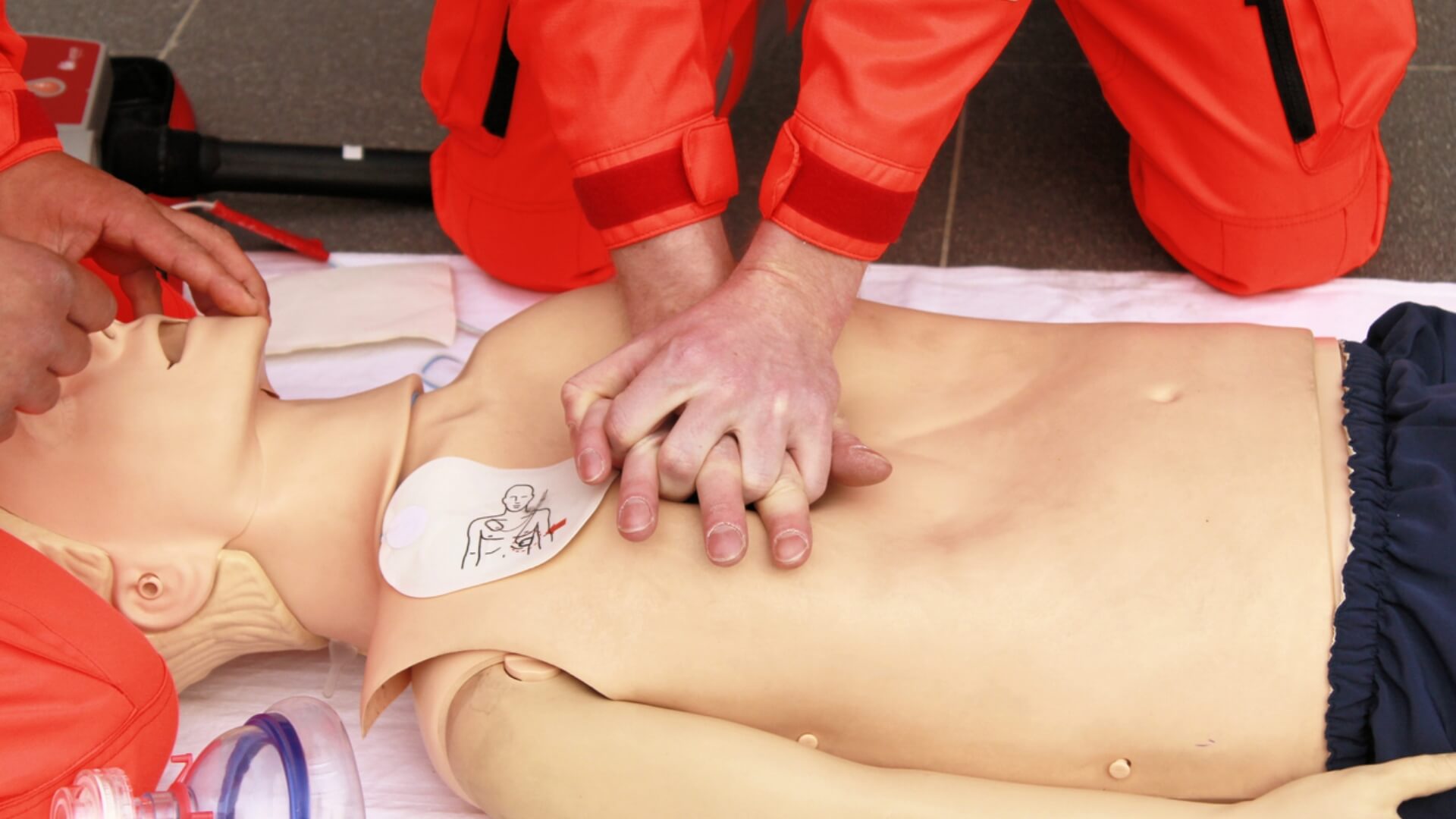AED signs are key for emergency readiness. They let bystanders know that a defibrillator is close by. This visibility helps reduce response times during cardiac events. It also supports AED program standards. It’s important to know the legal rules for AED signage. These rules can change based on where you are.
While AED signage laws differ across states, their importance remains universal. Even if it’s not required by law, marking where an AED is located can save lives in an emergency.
Federal AED signage requirements
AED signage isn’t required by federal law. OSHA doesn’t enforce specific rules, but it does suggest having AEDs at work. Every state has its own rules, but some best practices are shared nationwide.
AED programs exist in all 50 states. You can find them in places like schools, churches, gyms, offices, and hotels. In certain states, maintenance has to stick to rules set by the manufacturer and the American Heart Association. This also includes guidance on where to place signs.
After setting up your AED program, tell employees about it. Also, ensure the device locations are easy to find. Use tools like signs, newsletters, and internal communications to keep the program visible. Ongoing awareness shows a strong commitment to workplace safety.
States needing AHA compliance for AEDs must follow these broad recommendations as guidelines.
State-by-State AED Signage Requirements
Many states do not include AED signage in their laws. Yet, they often suggest what is needed. In Minnesota, state law requires an emergency response plan. This plan usually includes clear spots for AED locations.
An effective emergency response plan reduces risk and keeps key resources on hand. For instance, the defibrillator should be easy to find during a crisis. Federal guidelines say the plan should have clear signs. These signs help support quick action.
Minnesota is one of the states that need an emergency plan or AHA-compliant AED programs. Regardless of local laws, prioritizing clear AED signage is essential. Some states mention signage in their regulations, but many do not.
California
California enforces detailed rules for AED signage. Public buildings must show written instructions next to each AED. These instructions need to be in a font size of at least 14 points, as stated in Health and Safety Code § 1797.196. You can meet this rule by using a wall poster that is designed properly.
New Hampshire
New Hampshire’s Department of Safety suggests using “AED On-Site” signs. These signs show where a defibrillator is. They’re not legally required, though.
New York
New York law doesn’t require AED signage next to the device. Yet, public places with defibrillators must show a sign at the main entrance. This is stated in PBH § 3000-b of the state’s Consolidated Laws.
Public access defibrillation providers must put up a sign. This sign should be at the main entrance of any building with an AED. The sign should clearly say where the facility has located the AED.
Oregon
The Oregon Health Authority labels AEDs as lifesaving tools. They must be in a visible and accessible spot for emergencies. The wording is a bit unclear. Words like “conspicuous” and “readily accessible” suggest that clear signs are likely needed. This is especially true in places like schools, camps, pools, and other busy areas.
Pennsylvania
According to Pennsylvania Statutes, 73 P.S. § 2174, a sign must be clearly visible near each AED. If the cabinet is clearly labeled “AED,” it might meet this rule. Yet, you may need extra signs if the label is small or hard to read from far away.
General AED Signage Recommendations
To ensure your AED signs are visible and compliant, follow these key practices:
- Put the AED in a visible, central location. It should be near places where heart emergencies happen, within a minute’s walk. This supports the American Heart Association’s goal of delivering a shock within 3 to 5 minutes. Make sure nothing blocks the view of the AED or its signage from any direction.
- To keep the AED both visible and accessible, mount the cabinet no higher than 48 inches from the floor. Place any related signage either above or next to the unit for clear visibility.
- Place AED signs close to the device. Use a 3D wall sign above it for better visibility. Add a nearby poster to help untrained responders during an emergency.
- Be sure to add any extra signage your state may need. In New York, public facilities must place an AED notice at their main entrance. Check your local regulations for specific details.
This is a good time to ensure you have proper AED signage in place. It helps with compliance and can save lives when every second matters.
FAQs
Are AED signs legally required in every state?
AED signage requirements vary by state. Many states don’t need signage. Yet, they often suggest it through emergency preparedness rules. Some states, such as New York and California, have clear rules for where to place signs in their laws. It’s important to review your state’s specific rules to ensure compliance.
What are the OSHA AED requirements for signage in the workplace?
OSHA doesn’t enforce specific AED signage rules. Yet, it recommends having AEDs in workplaces. They should also be easy to find in emergencies. Clear signage practices help meet OSHA’s safety goals. They also improve response times.
Where should AED signage be placed?
Place AED signs near the defibrillator. Use a 3D wall sign above the cabinet for better visibility. Also, add an informational poster next to it. Signage should also be placed at the main entrance if required by state law, such as in New York. These placements help responders locate the device quickly in an emergency.
What is the recommended AED cabinet height?
The recommended AED cabinet height is no more than 48 inches from the floor. This makes the device easy for everyone to access, including people with disabilities. It also stays visible from far away. This standard is commonly followed across industries to meet AED height requirements.
Are there rules for the mounting height of AED cabinets?
Yes, an AED cabinet should be mounted at 48 inches or lower. This keeps it visible and easy to reach. This follows safety best practices and ADA accessibility guidelines. It ensures the AED is ready for quick use in an emergency.
Conclusion
Clear AED signs are not a good idea; they are vital for emergency readiness. They can save lives. Check local laws for requirements. Place signs in visible spots. Also, mount your AED cabinet at the right height. This ensures you follow the law and helps people respond faster in emergencies. Stay updated on OSHA AED recommendations and local laws. This keeps your facility compliant and ready to respond when every second matters.



